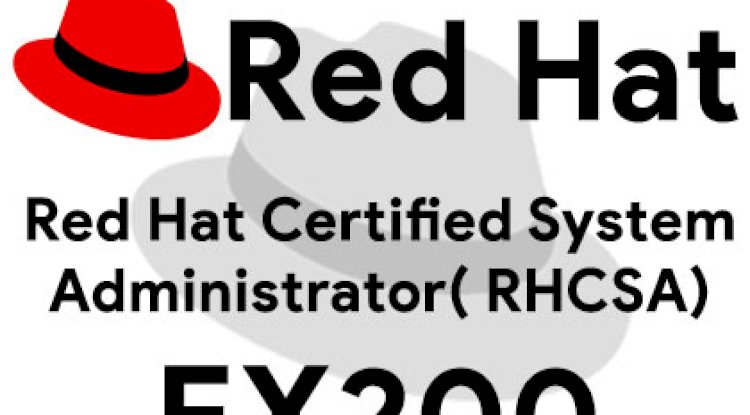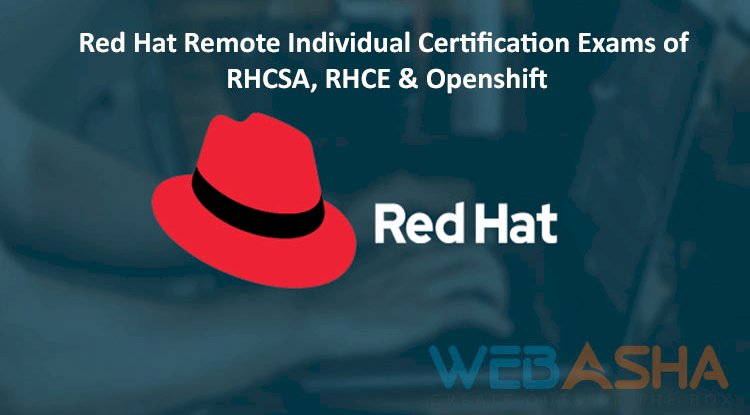5 Simple Yet Effective Ways to Prevent AI Scrapers from Stealing Your Website Content | Protecting Your Data from Unauthorized Web Scraping
With the rapid advancement of AI and Large Language Models (LLMs), web scraping has become a major concern for website owners. AI-powered scrapers are being used to extract data from websites without permission, often to train AI models or republish content elsewhere. This raises intellectual property concerns, SEO issues, and security risks. To combat this growing problem, website owners can use five simple but effective methods to prevent unauthorized AI scrapers from accessing their content: Mandatory Sign-Up and Login – Restrict content access to authenticated users. Use CAPTCHAs – Block automated bots from scraping data. Block Bots and Crawlers – Use tools like Cloudflare Firewall to prevent unauthorized access. Implement Robots.txt – Restrict web crawlers from accessing certain directories. Rate Limiting – Control the number of requests an IP can make to prevent mass scraping. By implementing these strategies, website owners can safeguard their data, reduce c
Introduction
With the rise of Large Language Models (LLMs) and AI-driven tools, web scraping has become a significant concern for content creators, businesses, and website owners. AI scrapers, often used by large tech companies and malicious actors, can extract data from websites without permission to train their models or republish content elsewhere. This not only violates the intellectual property rights of website owners but also affects SEO rankings and reduces organic traffic.
Fortunately, there are effective techniques to combat AI scrapers and protect website content from unauthorized data extraction. In this blog, we explore five simple yet powerful methods to safeguard your site from AI-powered web scrapers.
Require Mandatory Sign-Up and Login
One of the easiest ways to prevent data scraping is to implement a mandatory sign-up and login system. By restricting access to registered users only, website owners can limit the exposure of content to unauthorized bots and scrapers.
How It Works:
-
Require users to create an account before they can access your content.
-
Implement email verification to ensure that only real users sign up.
-
Restrict access to API endpoints and sensitive data only to logged-in users.
Benefits:
-
Prevents unauthorized automated access
-
Helps in tracking user activity
-
Reduces content visibility to scraper bots
Example Implementation:
In WordPress, you can use plugins like Ultimate Member or Restrict Content Pro to enforce user authentication. For custom-built websites, implementing JWT (JSON Web Token) authentication can restrict content access.
Use CAPTCHAs to Block Automated Scrapers
CAPTCHAs (Completely Automated Public Turing test to tell Computers and Humans Apart) are an effective way to differentiate between real users and automated bots. AI-powered scrapers struggle to bypass CAPTCHAs, making them a great first line of defense.
Types of CAPTCHAs:
-
reCAPTCHA v2 & v3 – Provided by Google, detects bot behavior.
-
Text-based CAPTCHAs – Require users to type distorted words.
-
Image-based CAPTCHAs – Ask users to identify objects in images.
-
Math-based CAPTCHAs – Require solving a simple arithmetic problem.
Benefits:
-
Prevents large-scale bot access
-
Blocks automated scripts from mass scraping
-
Easy for real users to solve, but difficult for scrapers
Example Implementation:
-
Use Google reCAPTCHA for login and form submissions.
-
Add hCaptcha, an alternative to Google’s reCAPTCHA, which provides better privacy.
Block Bots and Crawlers Using Security Services
Bots often follow predictable patterns, allowing website owners to detect and block them using security services. Cloudflare Firewall, AWS Shield, and other bot detection services help in identifying non-human behavior and preventing access.
How It Works:
-
Identify bot traffic using security services.
-
Block requests from suspicious IPs using firewalls.
-
Restrict access to deep-linked pages that are rarely visited by real users.
Benefits:
-
Real-time bot detection and blocking
-
Prevents AI scrapers from harvesting data
-
Improves website security against DDoS attacks
Example Implementation:
-
Use Cloudflare’s Bot Management to detect and block scrapers.
-
Set up AWS WAF (Web Application Firewall) to restrict access from known bot networks.
Use Robots.txt to Restrict Crawling
A robots.txt file is a simple but effective way to control how search engines and bots crawl your website. It follows the Robots Exclusion Protocol (REP) to instruct bots on what they can and cannot access.
How It Works:
-
Allow search engines like Google to index your site.
-
Block AI scrapers and bad bots from crawling private sections.
-
Prevent directory listing for sensitive files and content.
Example robots.txt File:
User-agent: *
Disallow: /private/
Disallow: /api/
Disallow: /admin/
-
The
*wildcard applies to all bots. -
Disallow: /private/prevents bots from crawling the/private/directory.
Benefits:
-
Easy to implement and manage
-
Prevents AI scrapers from accessing restricted content
-
Optimizes site crawling for search engines
Example Implementation:
-
Modify the
robots.txtfile in your website’s root directory. -
Use Google Search Console to test and validate the
robots.txtfile.
Implement Rate Limiting to Prevent Excessive Requests
Rate limiting restricts the number of requests a single IP address, user, or bot can make within a specified time frame. This prevents scrapers from rapidly extracting large amounts of data from your site.
How It Works:
-
Limit the number of requests from an IP address per second/minute.
-
Monitor request patterns to detect scrapers.
-
Block or challenge suspicious users that exceed thresholds.
Example Rate Limiting Configuration (Nginx):
limit_req_zone $binary_remote_addr zone=one:10m rate=5r/s;
server {
location / {
limit_req zone=one burst=10 nodelay;
}
}
This configuration:
-
Limits requests to 5 per second per IP
-
Prevents rapid automated requests
-
Reduces the impact of DDoS attacks
Benefits:
-
Prevents AI scrapers from making mass requests
-
Reduces website load and protects bandwidth
-
Enhances security against brute-force attacks
Example Implementation:
-
Use Cloudflare Rate Limiting to restrict excessive traffic.
-
Implement rate limiting with Nginx or Apache on the server level.
Conclusion
With AI scrapers becoming increasingly sophisticated, it is essential for website owners and businesses to take proactive steps to protect their content. By implementing mandatory logins, CAPTCHAs, bot-blocking services, robots.txt restrictions, and rate limiting, you can make it significantly harder for AI-driven scrapers to access and steal your website data.
By adopting these simple yet effective security measures, you not only safeguard your website’s content but also ensure a secure and efficient browsing experience for real users. Stay proactive and keep your website protected!
FAQ
What is AI web scraping?
AI web scraping refers to the automated process of extracting data from websites using artificial intelligence and machine learning techniques.
Why should website owners be concerned about AI scrapers?
AI scrapers can steal website content without permission, affecting SEO rankings, violating intellectual property rights, and exposing sensitive data.
How does requiring a sign-up/login help prevent scraping?
Mandatory sign-up ensures that only authenticated users can access content, preventing bots from easily extracting data.
What type of CAPTCHA works best against AI scrapers?
Google reCAPTCHA v3, hCaptcha, and text-based CAPTCHAs are effective against AI scrapers.
How does bot detection software help stop web scraping?
Bot detection services like Cloudflare and AWS Shield analyze traffic patterns and block non-human activities.
What is the role of robots.txt in preventing web scraping?
The robots.txt file instructs bots on which pages they are allowed to crawl, helping prevent unauthorized data collection.
Can AI scrapers bypass robots.txt restrictions?
Yes, some advanced scrapers ignore robots.txt, but it still serves as a deterrent for ethical bots.
What is rate limiting, and how does it prevent scraping?
Rate limiting restricts the number of requests an IP or user can make within a specific time frame, making mass scraping difficult.
How can website owners implement rate limiting?
Rate limiting can be set up using server configurations (Nginx, Apache) or security services like Cloudflare Rate Limiting.
What tools can help detect and block web scrapers?
Popular tools include Cloudflare Firewall, AWS WAF, Google reCAPTCHA, and Bot Management Services.
Does using JavaScript-based rendering help prevent scraping?
Yes, dynamically loaded content via JavaScript makes it harder for simple scrapers to extract data.
How do AI scrapers identify and extract content from websites?
AI scrapers use machine learning models to detect patterns, recognize text, and navigate websites like a human user.
Can website owners track scraping activities?
Yes, by monitoring server logs, unusual traffic spikes, and repetitive requests from the same IP.
What are the legal implications of web scraping?
Unauthorized web scraping can violate copyright laws, data privacy regulations (GDPR, CCPA), and terms of service agreements.
How can businesses take legal action against scrapers?
Businesses can send Cease and Desist notices, implement legal disclaimers, or file complaints under data protection laws.
Does disabling right-click or text selection prevent scraping?
It can reduce manual copying, but automated scrapers can still extract content through HTML parsing.
Are AI scrapers becoming more sophisticated?
Yes, modern AI scrapers use NLP (Natural Language Processing) and deep learning to bypass traditional security measures.
Does blocking certain IP addresses stop web scraping?
Blocking known scraper IPs helps but is not a foolproof solution since scrapers can use VPNs or proxy networks.
How does user-agent detection help prevent scraping?
Websites can detect and block requests from suspicious user-agents (e.g., bots, scrapers, automated crawlers).
Can JavaScript obfuscation help protect website content?
Yes, obfuscating JavaScript makes it harder for scrapers to read and extract structured data.
What is fingerprinting, and how does it block scrapers?
Fingerprinting tracks unique user behaviors, such as mouse movements and keystrokes, to detect bots.
How can website owners prevent AI from using their data for training?
They can include a meta “noindex” tag, modify robots.txt, or add anti-scraping headers.
Can CAPTCHAs block all AI scrapers?
No, but CAPTCHAs significantly increase the difficulty for AI scrapers and automated bots.
How does Cloudflare help in stopping AI scrapers?
Cloudflare provides bot detection, firewall rules, and rate limiting to prevent automated content theft.
Should websites limit API access to prevent scraping?
Yes, restricting API access to authenticated users only prevents scrapers from extracting data via API endpoints.
Does enabling HTTPS help protect website content?
HTTPS encrypts data in transit, but it does not directly prevent web scraping.
How often should website owners monitor for web scraping?
Regular monitoring of server logs, traffic patterns, and suspicious IPs helps detect scrapers early.
Can scrapers still extract content from secured pages?
Some advanced scrapers can bypass security, but combining multiple anti-scraping techniques significantly reduces risks.
What is the best overall strategy to stop AI scrapers?
A multi-layered security approach using authentication, CAPTCHAs, bot detection, and rate limiting provides the best protection.








![Top 10 Most Popular Notorious Hacker Groups in History [2025]](https://www.webasha.com/blog/uploads/images/202408/image_650x434_66c31719e7f33.webp)




![Top 10 Ethical Hackers in the World [2025]](https://www.webasha.com/blog/uploads/images/202408/image_100x75_66c2f983c207b.webp)

![[2025] Top 100+ VAPT Interview Questions and Answers](https://www.webasha.com/blog/uploads/images/image_100x75_6512b1e4b64f7.jpg)








